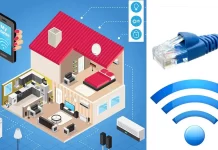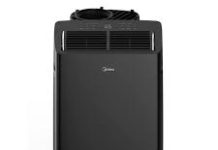Our PC or smartphone no longer detects the Wi-Fi network? Let’s see together all the causes and applicable solutions to restore the connection
Among the problems that afflict Wi-Fi connections, the most annoying is certainly the sudden disappearance of the network : even if the modem works correctly and it is possible to navigate without problems via Ethernet cable, all devices that make extensive use of Wi-Fi (just think of smartphones, Smart TVs and tablets) cannot see the name of the network, preventing us from navigating anywhere in the house. This problem has various causes, all of which can be easily identified and solved with a few mouse clicks or taps on the screen.
In the following guide we will show you how to solve the problems of no Wi-Fi, of Wi-Fi not detectable or of Wi-Fi disabled , so that you can go back to wireless surfing in every room without having to use a cable (which is still impossible. on some portable devices).
Wi-Fi network does not appear: how to fix
If the modem is working properly and allows you to access the Internet via cable, it is highly likely that the problem is due to an incorrect Wi-Fi configuration in the modem settings. To solve the problem, connect any PC or laptop to the Ethernet cable modem , open any web browser (such as Google Chrome or Microsoft Edge) and type in the address bar the IP needed to access the modem configuration panel , as seen also in the guide Enter the router to access the settings easily .
Once you have access to the modem settings panel, let’s go to the Wi-Fi , Wireless or similar items menu and read the next chapter of the guide, where we have collected all the settings that can generate problems in the Wi-Fi network.
Common Wi-Fi setup errors
As mentioned, it takes very little to make the Wi-Fi network undetectable, especially if you mess around with modem configurations without knowing exactly where to put your hands. The main parameters or configurations that can make wireless network detection impossible are:
- Wi-Fi channel : practically all modems allow you to choose the Wi-Fi transmission channel but we must pay attention to the channel we choose, since some channels (especially in the 5 GHz frequency) are not visible on some devices. To be on the safe side we recommend using channels 1, 6 and 11 in the 2.4 GHz frequency band and using channels 36, 44, 52 or 100 in the 5 GHz frequency band.
- Wi-Fi Standard : Choices on the wireless transmission standard can also make a difference, with some devices (especially older ones) unable to access the new transmission standards. For maximum compatibility, we recommend that you always set mixed standards, such as 802.11g + n and 802.11n + ac ; on new modems we can also find Wi-Fi 3 + 4 , Wi-Fi 4 + 5 and Wi-Fi 5 + 6 .
- Security Protocol : Even the security protocol can make a difference in detecting the Wi-Fi network, although in this case you are more likely to be able to see the network but not be able to log in (even by entering the correct Wi-Fi password). For maximum compatibility, make sure to set WPA2 as a security protocol and avoid the “WPA3 only” mode, which is still not very widespread and supported.
We carefully check if these entries are present in the modem settings and correct where necessary; if some items are missing, make sure you have activated the expert or advanced mode in the configuration panel, since often a simple mode for novice users (with many options disabled or not reachable) starts automatically.
High distance from the modem
If the Wi-Fi is configured correctly but the network is not viewable from our room, the problem is probably the excessive distance from the modem, which makes it impossible to view the network to connect.
The first good advice is to try to connect to the 2.4 GHz network of the same modem , which still offers better coverage than the 5 GHz network. If even the network with greater coverage does not solve the problem we consider using a range extender such as the TP-Link AC1200 Wireless Dual Band WiFi Repeater , sold and shipped by Amazon for less than 35 €.

To use it, connect the device to an electrical outlet, placing it halfway between the modem and the room where Wi-Fi is not detected; once connected, enter its configuration panel and connect it to the modem’s Wi-Fi network (both at 5 GHz and 2.4 GHz), so as to obtain an extension of the network to which we can connect (on the extended network the Wi-Fi password -Fi is the same as the wireless network of the modem).
To learn more, we can read our guides on how the wifi repeater or “Range Extender” works and on the best 5 GHz WiFi repeaters, to increase internet coverage .
Problems only with some devices
If the Wi-Fi network is displayed correctly only by some devices (for example only from a PC or only on the smartphone), the problem may not concern the Wi-Fi network of the modem but the single device.
If the problem appeared on an Android device we can try to turn off and turn on the Wi-Fi, so as to restore correct operation; we can carry out the test using the shortcut keys (in the drop-down menu, swiping from the top edge) or by taking us to the Settings -> Wi-Fi path . If we do not even solve this, turn off the device completely ( power button -> Turn off ) wait a few minutes and turn it back on, so that we can test the Wi-Fi connection again.
To use it, connect the device to an electrical outlet, placing it halfway between the modem and the room where Wi-Fi is not detected; once connected, enter its configuration panel and connect it to the modem’s Wi-Fi network (both at 5 GHz and 2.4 GHz), so as to obtain an extension of the network to which we can connect (on the extended network the Wi-Fi password -Fi is the same as the wireless network of the modem).
To learn more, we can read our guides on how the wifi repeater or “Range Extender” works and on the best 5 GHz WiFi repeaters, to increase internet coverage .
Problems only with some devices
If the Wi-Fi network is displayed correctly only by some devices (for example only from a PC or only on the smartphone), the problem may not concern the Wi-Fi network of the modem but the single device.
If the problem appeared on an Android device we can try to turn off and turn on the Wi-Fi, so as to restore correct operation; we can carry out the test using the shortcut keys (in the drop-down menu, swiping from the top edge) or by taking us to the Settings -> Wi-Fi path . If we do not even solve this, turn off the device completely ( power button -> Turn off ) wait a few minutes and turn it back on, so that we can test the Wi-Fi connection again.
If the problem appeared on an iPhone or iPad we can apply the same advice seen for Android devices, but with one more possibility: by taking us to the Settings -> General -> Reset path we can press on Reset network settings , so as to reset all Wi-Fi related settings and try again to connect to the undetected Wi-Fi network.
If the Wi-Fi network is not detected on a PC with Windows 10 we can try to solve it by pressing the right button on the Start menu (in the lower left corner), opening the Network Connections menu and pressing on the Troubleshoot menu network , so as to start a diagnostic system to identify the problem that prevents you from viewing the network. The advice seen for Android devices is also valid on PC: we can also try to turn off the Wi-Fi or the device and turn everything back on after 2 minutes.
On Smart TVs the problem may be difficult to solve , as many TVs have a power saving mode that never really turns off the power, but actually only shows the black screen (the operating system keeps running). In these cases it may be a good idea to completely disconnect the power supply by removing the plug from the wall and waiting at least 10 seconds before reconnecting it.
Conclusions
An undetected Wi-Fi network could put even an experienced user in difficulty, since the problems that cause this error can be numerous, starting from the incorrect settings of the modem through to the problems of drivers or modules integrated within modern devices. We can definitely say that, if the problem is not hardware in nature, with the advice shown above we should be able to solve virtually all problems with Wi-Fi.
To make the Wi-Fi network even more stable and fast, we can also look for how to solve if the wifi is slow and integrate the system with some free programs that minimize the slowdowns of the wifi connection .




